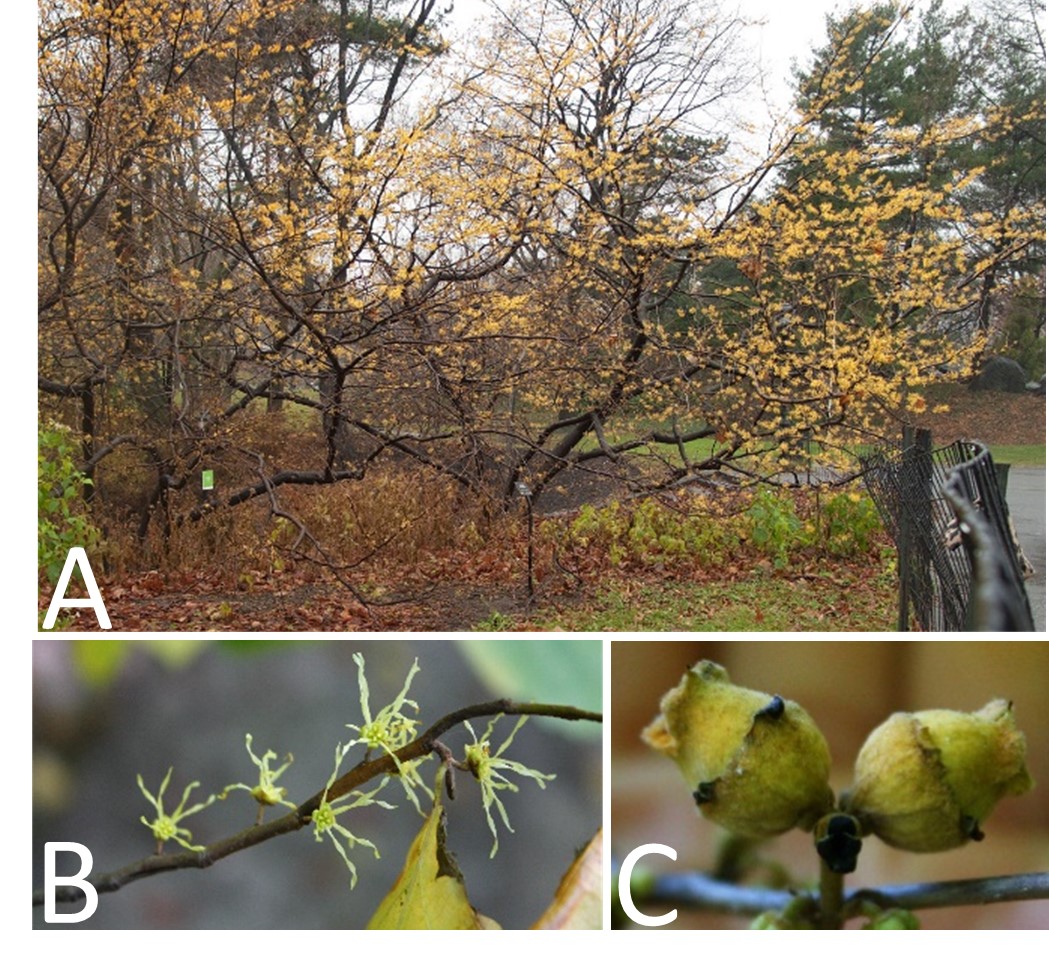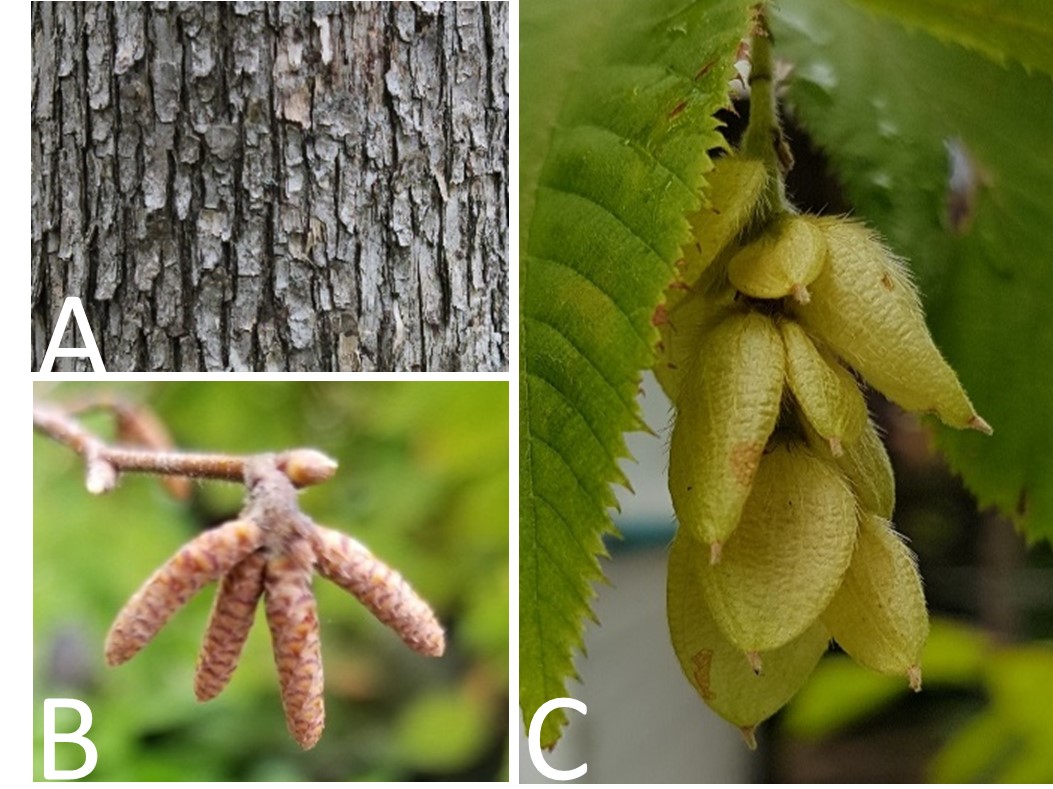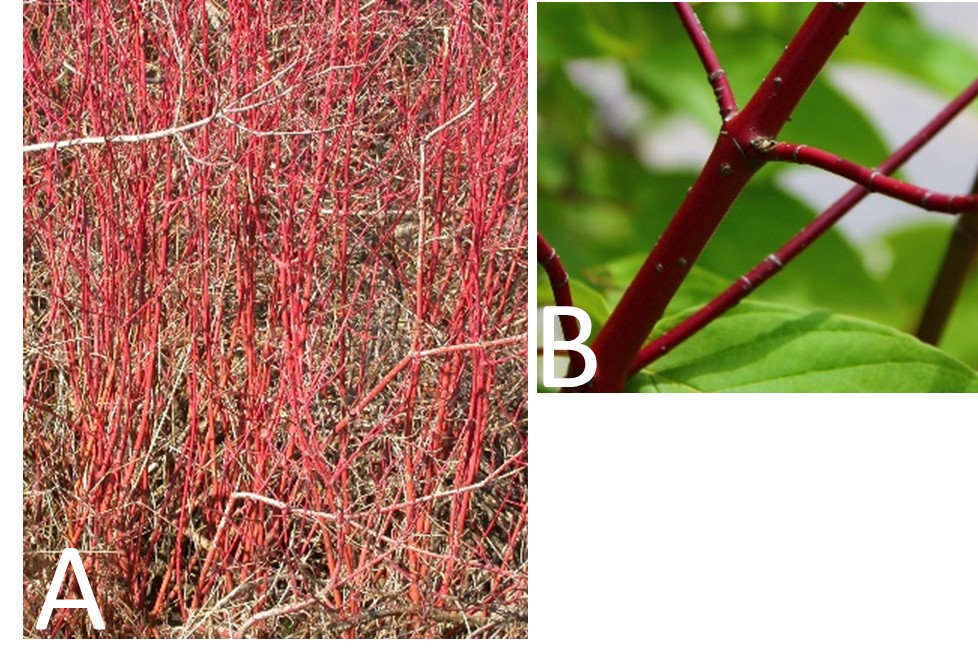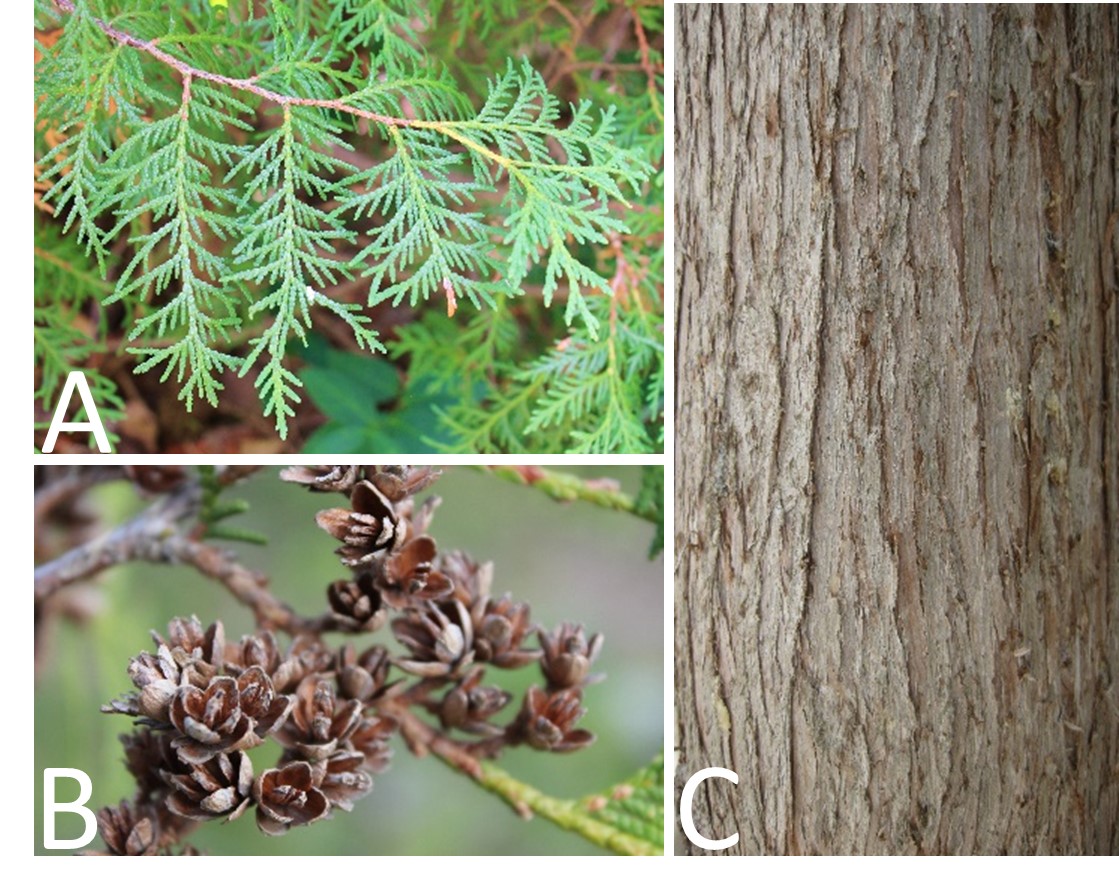In the winter, many trees and shrubs have very subtle identification clues, while others can have quite distinct features. Be sure to look for both the obvious and not-so-obvious clues such as bark, buds, fruit and growth form (overall shape).
Here are some clues to help identify four stand-out trees and shrubs this winter:
1. Common Witchhazel (Hamamelis virginiana)
A shrub well known for its healing properties, common witchhazel can be spotted against a fall/winter landscape quite easily. Look for the long, winding branches that carry bright yellow flowers and small seed capsules!

A. Shape: Tall with an irregular, open crown and many large, spreading branches. This shrub is marcescent, which means it may hold onto its dead leaves throughout the winter.
B. Flowers: Small, fragrant, bright yellow flowers. Each flower has slender, crinkly, ribbon-like petals (resembling yellow spiders) that appear in clusters along branches in late fall, typically after leaf drop.
C. Fruit: Small, tan to brown, woody seed capsules that are about half an inch long. Each capsule contains one to two shiny, black seeds that mature in late fall and persist through the winter.
2. Ironwood (Ostrya virginiana)
While most trees are completely bare in the winter, some retain either their flowers or fruit. Keep an eye out for hanging catkins on the great ironwood tree!

A. Bark: Ironwood trees have a brown to grey coloured bark, separated into narrow, peeling vertical strips, giving them a shaggy appearance.
B. Flowers: Male catkins develop in early winter. These appear in long, slender clusters, compared to the slender, light green female flowers that emerge in the spring
C. Fruit: Female flowers are followed by small, flattened, leafy clusters of sacs, resembling hops, that mature in late summer and persist through winter. If you are interested in feeding local birds, the fruits of the ironwood are favoured by the purple finch, downy woodpecker, and rose-breasted grosbeak.
3. Red Osier Dogwood (Cornus sericea)
Initially, you may think that the red osier dogwood would have few winter identification traits, however; there is one trait that is quite distinguishable! As its name suggests, red osier dogwood has red bark. In winter, the red branches are exposed in the absence of leaves and are easily spotted, especially against a snowy landscape.

A/B. Bark: Very conspicuous red branches in winter, often in dense thickets.
4. Eastern White Cedar (Thuja occidentalis)
Evergreens are some of the most distinguishable trees in winter. As the name suggests, evergreens generally keep their foliage year-round. However, not all evergreens are the same, so pay close attention to how their leaves (needles or scales) are growing on their branches to help distinguish the species! The Eastern White Cedar is quite unique in its growth.

A. Leaves: Flattened, fan-shaped sprays with alternate pairs of closely overlapping, yellowish-green, aromatic scales emerge in spring.
B. Cones: Brown in colour and oblong in shape. Found standing upright along branches.
C. Bark: Fibrous, grey to reddish-brown and generally ridged and furrowed in texture.
Want to make your yard stand out year-round? We offer these beautiful native species and more through our subsidized Backyard Tree Planting Program. We accept applicants year-round – get started on your application now!
Jon Curtis is the Residential Planting Programs Field Coordinator at LEAF.
LEAF offers a subsidized Backyard Tree Planting Program for private property. The program is supported by the City of Toronto, the Regional Municipality of York, the City of Markham, the Town of Newmarket, the Regional Municipality of Durham, the Town of Ajax, the City of Oshawa, the City of Pickering, the Township of Scugog, the Town of Whitby, Ontario Power Generation, Ontario Trillium Foundation and Grand Trees/Canadian Trees For Life.
